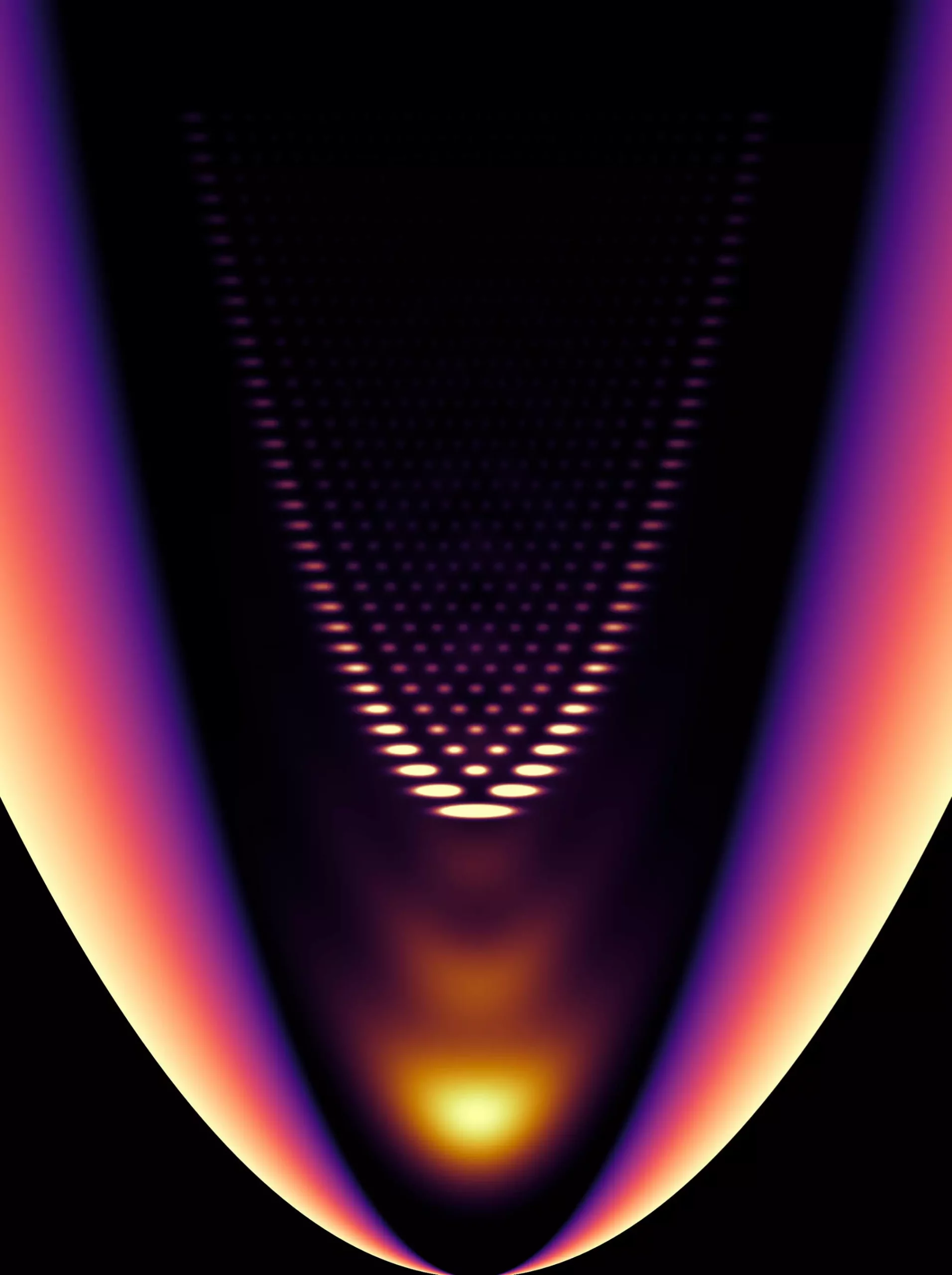In an exceptional breakthrough, physicists from the University of Bonn and the University of Kaiserslautern-Landau (RPTU) have successfully synthesized a one-dimensional gas comprised of light particles, or photons. This innovative experiment marks a significant accomplishment in experimental physics, as it enables researchers to scrutinize theoretical predictions regarding the behavior of light as a condensed state of matter for the first time. The fruitful findings of this research have been documented in the prestigious journal Nature Physics.
Traditionally, the study of gases has been limited to multi-dimensional forms, leading to a rich understanding of phase transitions. However, the quest for one-dimensional gas behavior presents unique challenges and opportunities. By manipulating the dimensional space of light, the researchers push the boundaries of what we understand about quantum phenomena. This pioneering work opens the door to a wealth of possibilities in exploring quantum effects through light manipulation, potentially leading to advanced applications in quantum computing and optical technologies.
To conceptualize the creation of a one-dimensional gas, one might visualize the act of filling a swimming pool with water. Using a garden hose to generate a jet of water, the pool’s surface experiences a minimal change in water level as the incoming water disperses quickly. However, the dynamics shift dramatically when we fill a narrow gutter: the water jet causes significant waves due to the constraints of the gutter’s boundaries, illustrating how the system becomes more “one-dimensional” and waves gain amplitude.
Translating this thought experiment to the domain of light requires a sophisticated apparatus. The researchers filled a minuscule container with fluorescent dye and used a laser to stimulate the liquid. As the photons generated oscillated between the walls of the container, they collided with dye molecules, leading to a cooling process that culminated in the condensation of the photon gas. The dimensionality of this gas can be manipulated through the meticulous alteration of the reflective surfaces of the container.
Working alongside Prof. Dr. Georg von Freymann’s team at RPTU, the researchers employed an innovative high-resolution structuring technique to engrain microscale features on the reflective surfaces of the photon container. This technique, which involves applying a transparent polymer to create minute protrusions, enhances the ability to trap photons within one or two dimensions effectively. The resulting structure acts as a controlled “gutter” for light, allowing the researchers to observe one-dimensional gas behavior.
The transition from a liquid state to a solid, akin to water freezing at a defined temperature, is familiar even outside scientific contexts. Anticipating similar orderly transitions in a one-dimensional gas, however, reveals an intriguing complexity. While two-dimensional gases exhibit precise phase transition thresholds, the case of one-dimensional photon gases is markedly different. According to Dr. Vewinger, thermal fluctuations—a product of quantum mechanics—play a formidable role in one-dimensional systems. As the dimensionality decreases, these fluctuations become more pronounced, disrupting uniform behavior and potentially obliterating the notion of a precise condensation point.
In this context, the one-dimensional gas behaves akin to an “icy water” state: it cools without exhibiting a definitive transition to a solid form. These behaviors challenge existing paradigms and compel physicists to revisit conventional beliefs about phase transitions in lower-dimensional spaces. The implications of these discoveries extend far beyond academic curiosity; they can yield transformative insights into quantum physics, enhancing our comprehension of degenerate gases.
The researchers’ observations underscore that the one-dimensional photon gas does not feature a distinct condensation point. However, by refining the polymer structuring further, they anticipate examining transitional phenomena across different dimensions with increasing precision. As the field remains largely exploratory, the basic research conducted here portends impressive applicability in various realms of quantum optics and condensed matter physics.
This groundbreaking study of one-dimensional photon gases challenges long-held assumptions about the behavior of quantum systems. By embarking on this path of exploration, the researchers illuminate new avenues for scientific inquiry and technological advancement. In a world where quantum effects govern numerous technological innovations, the unique characteristics of one-dimensional photon gases may pave the way for the next wave of quantum tools, shaping our understanding of light in fundamentally new ways.

